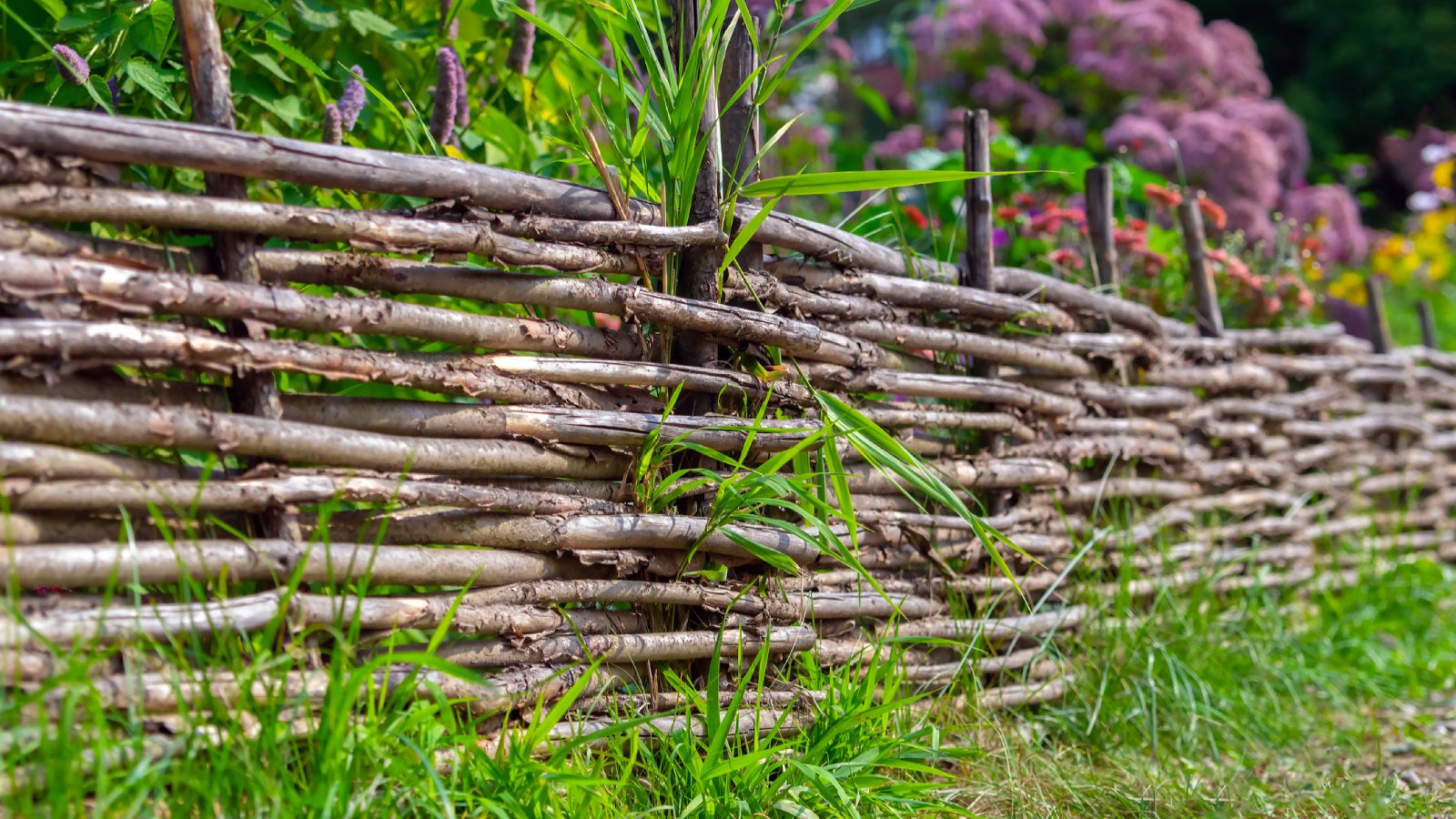A Wattle Fence Is The Nostalgic Touch Your Garden Needs
A homemade wattle fence makes a charming addition to a cottage garden or any yard. Learn how to build one from materials that are mostly free.


What is a wattle fence? If you’re thinking that wattle was a building material long, long ago during the Medieval period of the world, you are absolutely right. But wattle is also a thing today, and budget-minded gardeners are looking to wattle fences to create barriers in their landscape.
What exactly is wattle? What do you need to make wattle fencing? Read on for everything you need to know to create a whimsical woven wattle fence.
What Is a Wattle Fence?
Wattling is an age-old craft where young, green shoots are woven together around upright sticks or poles to create a wall or fence. It was used by European landowners hundreds of years ago to build homes, sheds, and fencing.
Today, wattling is largely limited to creating rustic fencing and garden ornaments including tree branch trellises and arches. It is not just a garden task but an interesting hobby, and also a wonderful way to make use of pesky stump suckers and green whips that tend to reappear every spring.
Wattle Fence Materials
Wattle fences are nostalgic and fit right into the cottage garden aesthetics. What about cost? It’s hard to believe, looking at some of the cool wattle fences out there, but wattling is very close to free. That’s because the wattle fence materials are wooden stakes or poles and straight, slender, flexible suckers. You cut these yourself from willows or other trees on your property.
If you’ve ever cut down a willow or similar tree, you know first-hand how quickly those suckers appear on all sides of the stump. Other trees that sucker include maple, dogwood, beech, cherry, hemlock, and forsythia. Any species of tree will work for suckers as long as they are straight and flexible.
How to Make a Wattle Fence
Making a DIY wattle fence requires little more than time and intention. You’ll want to figure out your design before you begin. Then gather the materials.
Sign up for the Gardening Know How newsletter today and receive a free copy of our e-book "How to Grow Delicious Tomatoes".
Get enough hardwood stakes or posts so that you will be able to place one every 18 inches (46 cm). They should be thick – at least 4 inches (10 cm) – and twice as long as your fence will be tall. The best wood types for these posts are oak, walnut, bamboo, chestnut, or maple. If you make your own, you’ll need a saw to cut the branches, an ax to sharpen the end that goes into the ground, and a large garden hammer to pound the stakes into the ground.
Pound each supportive stand into the ground at least 12 inches (30 cm). Typically, the lower half of the stake is pounded into the ground.
Then prune enough suckers for the project gather, making sure they are about ½ inch (1 cm) in diameter at least 40 inches (101 cm) long. Why so long? You want each one to be woven around several stakes.
Weave the suckers under and over the stakes, then slide the woven section downward to compact it. Use thicker suckers first, then weave the slender one into gaps in the fencing.
Frequently Asked Questions
How long will a wattle fence last?
Some wattle fences last up to 10 years, but that longevity is not guaranteed. It varies depending on weather, how well it is built, and any preservation technique used.
What sticks are best for wattle fences?
The best shoots for wattle fences are supple, slender, and fairly long. A number of different types of tree species work well, with willow and hazel being the traditional trees.

Teo Spengler is a master gardener and a docent at the San Francisco Botanical Garden, where she hosts public tours. She has studied horticulture and written about nature, trees, plants, and gardening for more than two decades, following a career as an attorney and legal writer. Her extended family includes some 30 houseplants and hundreds of outdoor plants, including 250 trees, which are her main passion. Spengler currently splits her life between San Francisco and the French Basque Country, though she was raised in Alaska, giving her experience of gardening in a range of climates.